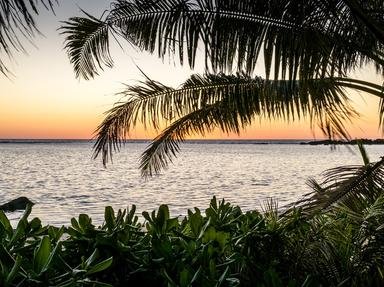Quiz Answer Key and Fun Facts
1. The majority of Fiji's population live on two main islands, Viti Levu and which other island whose name is reminiscent of one of the country's neighbours?
2. Lautoka, Fiji's second largest city, has which nickname derived from the main industry of the surrounding area?
3. In 2009, Fiji became the first nation to be suspended from which inter-governmental organisation dedicated to promoting economic growth, security and cooperation between Pacific nations?
4. The body of water to the north of the island of Viti Levu shares its name with the captain who was ousted from his ship during the infamous 'Mutiny on the Bounty'. What is it called?
5. If you went to a match at the ANZ National Stadium in Suva, which of these Olympic sports would you be likely to see?
6. Which outlying Fijian island is administered as a dependency and therefore has more local political autonomy than other areas of the country?
7. Mount Tomanivi is the highest point in Fiji, rising to around 1,300 metres (4,300 feet) above sea-level. By what name was it formerly known?
8. Two animals, neither of which is specifically symbolic of Fiji, appear on both Fiji's coat of arms and national flag. What are they?
9. The antipodes of Fiji mainly falls within which country of western Africa?
10. What name is given to the stretch of coastline on Viti Levu that includes the town of Sigatoka and is an important hub for the country's tourism industry?
Source: Author
Fifiona81
This quiz was reviewed by FunTrivia editor
Tizzabelle before going online.
Any errors found in FunTrivia content are routinely corrected through our feedback system.

